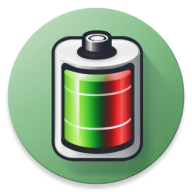Does your smartphone battery often leave you feeling frustrated? Rapid power drain, slower charging—these issues may stem from a lack of daily attention. Battery health monitoring is the key to maintaining your phone's battery in its best condition. With a simple daily "battery status check," you can identify potential issues early and take corrective action. This article provides a complete guide that explains how to perform daily "battery health tracking," interprets key indicators, and offers solutions for handling abnormalities. Let's go step by step to ensure your battery operates efficiently at all times!
Why Is Daily Battery Health Monitoring Important?
Smartphone batteries, typically lithium-ion, degrade over time. Daily battery health monitoring is like giving your battery a regular health check-up—it helps you understand its real-time condition and prevents minor issues from escalating into major problems. For instance, battery aging can lead to shorter battery life and even impact your phone's performance. By consistently practicing "battery health tracking," you can not only extend the battery's lifespan but also avoid unexpected situations, such as your phone shutting down at critical moments. Cultivating the habit of daily monitoring is the first step to keeping your battery in top shape.
Daily Monitoring Methods
Performing a "battery status check" is simple and can be done using built-in phone features or apps:
For iPhone Users
- Go to Settings → Battery → Battery Health & Charging.
- Check the "Maximum Capacity" and the status of "Optimized Battery Charging."
- Spend just a minute each day observing these values to monitor battery health trends.
For Android Users
- Some devices include built-in battery information tools (e.g., Samsung's "Device Care").
- You can also access battery details by entering codes like *#*#4636#*#* in the dialer (depending on the device model).
- If no built-in option is available, download apps like EasyBattery, which offers "battery health monitoring" features.
Set Reminders
- You can set a daily reminder in your calendar or an app to check your battery, such as before bed or while charging.
- Developing a habit of "battery health tracking" only takes a few minutes each day but lays the foundation for better battery care.
Understanding Key Indicators
When performing "battery health monitoring," there are several critical indicators to focus on. These metrics provide a clear picture of your battery's condition:
1. Maximum Capacity
- This is the percentage of the battery's current capacity compared to its original design capacity.
- 100% indicates a brand-new battery, while anything below 80% suggests significant aging.
- Daily "battery status checks" can help you spot any sudden capacity drops.
2. Charge Cycle Count
- A cycle count refers to one complete charge and discharge cycle (from 0% to 100%).
- Exceeding 500 cycles may lead to noticeable capacity reduction.
- Some tools display this data, making it an essential reference for "battery health tracking."
3. Temperature and Voltage
- A healthy battery operates at temperatures between 15°C–35°C (59°F–95°F) and voltages between 3.7V–4.2V.
- Extreme temperatures or abnormal voltage levels may signal potential issues.
Understanding these indicators enables you to evaluate your battery's health more accurately and adjust your usage habits accordingly.
How to Handle Abnormalities
If you identify problems during your daily "battery health monitoring," don't panic. Here are common issues and how to address them:
1. Rapid Drop in Maximum Capacity
- Example: A sudden decrease from 90% to 85% within a week may indicate incompatible chargers or high-temperature usage.
- Solution: Check your charging accessories, avoid using your phone while charging, and monitor for further changes.
2. Overheating
- If your "battery status check" shows temperatures exceeding 40°C (104°F), this could be due to power-hungry background apps or an overheated environment.
- Solution: Close unnecessary apps and place your phone in a well-ventilated area to cool down.
3. Erratic Power Jumps
- Example: The battery drops suddenly from 50% to 20%. This may be due to calibration errors or severe aging.
- Solution: Try a full discharge (use the battery until it shuts down) followed by a full charge. If the issue persists, consider replacing the battery.
These troubleshooting methods can help you quickly resolve abnormalities and maintain battery health. Regular "battery health tracking" also helps prevent problems from escalating.
Monitor Your Battery Health Daily with EasyBattery
Get real-time insights, personalized recommendations, and alerts for potential battery issues.
Download EasyBatteryDaily Maintenance Tips
In addition to monitoring, proper daily care can significantly improve your battery's condition:
Maintain a Charge Range of 20%–80%
- Avoid fully charging or completely draining your battery frequently.
- Keeping the charge within this range reduces the occurrence of full cycles.
Use Original Chargers
- Certified or original chargers ensure stable current and prevent overheating or overvoltage that could harm the battery.
- Avoid low-quality accessories.
Avoid Extreme Temperatures
- Don't expose your phone to prolonged high or low temperatures.
- Ensure the phone is used in moderate environments whenever possible.
Combining these habits with "battery health monitoring" ensures your battery remains in peak condition for longer.
Conclusion
Daily battery health monitoring is a simple yet effective way to extend your smartphone battery's lifespan. By learning the techniques for "battery status checks," understanding key indicators, and addressing abnormalities promptly, you can keep your battery performing at its best. Starting today, spend just a few minutes on "battery health tracking" to keep your phone running smoothly and efficiently. A healthy battery begins with daily care!
